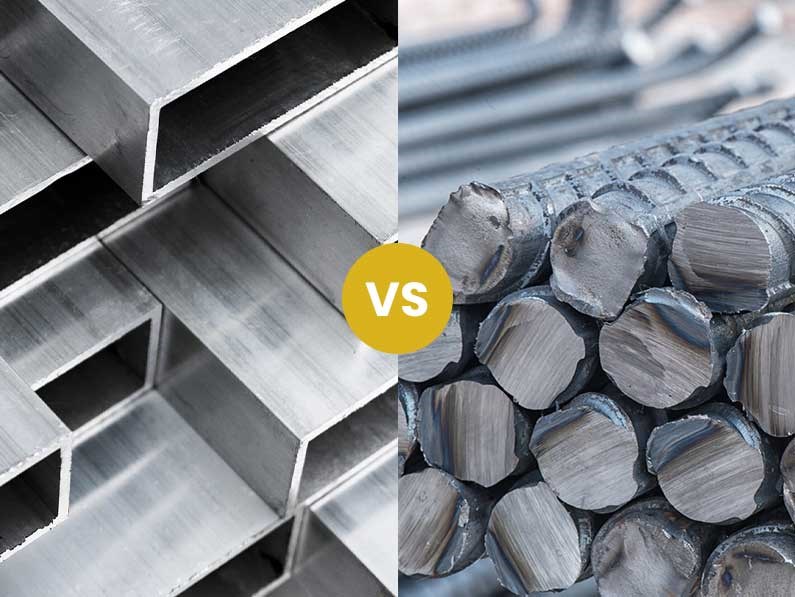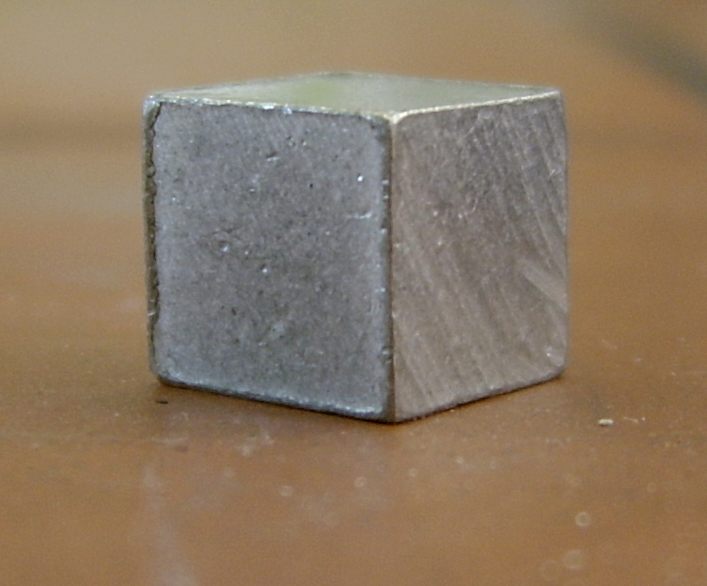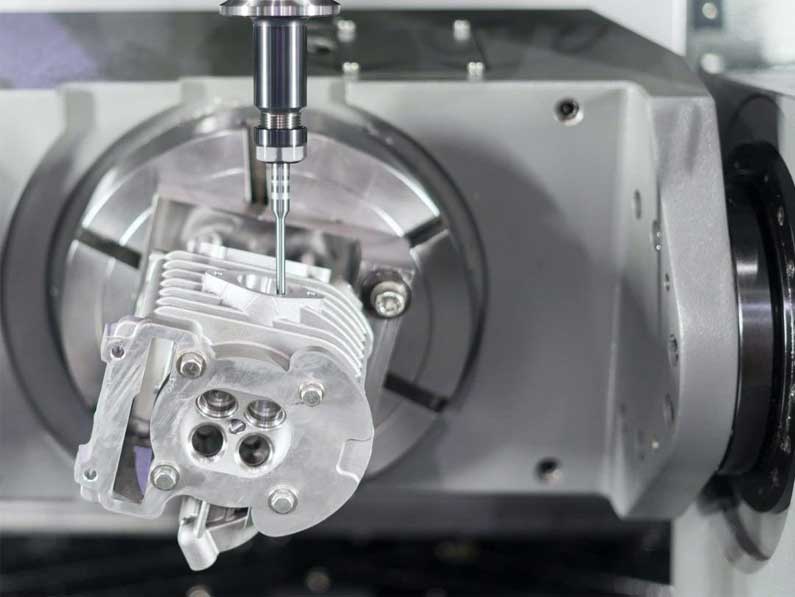Difference Between Aluminium and Steel

Metals are chemical elements that have characteristic properties such as malleability, ductility, and electrical conductivity. Most elements in the periodic table are metals. One of the major applications of metals is the production of metal alloys such as steel. The main difference between aluminium and steel is that aluminium is a metal whereas steel is a metal alloy.
1. What is Aluminium – Production, Properties, Uses
2. What is Steel – Types, Components, Properties, Uses
3. What is the difference between Aluminium and Steel – Comparison of Key Differences
|
ALUMINIUM VERSUS STEEL |
|
|---|---|
|
Aluminium is a soft metal with a silvery-grey colour |
Steel is a metal allot composed of iron, carbon and few other elements |
|
Resistant to corrosion and rusting |
Not corrosion resistant and rusting occurs easily |
|
A soft metal with relatively a low density |
A hard metal alloy with a high density |
|
Light-weighted metal |
Has a higher weight |
|
Somewhat difficult to be welded |
Easily welded |
|
Has a lower melting point |
Has a very high melting point |
What is Aluminium
Aluminium (Al) is a soft metal with a silvery-gray color. It has a shiny appearance. Aluminium has a light weight compared to other metals. It is malleable, i.e, it can be deformed under pressure. These properties of aluminium has made it to be used in aircraft manufacturing.
Aluminium is highly resistant to corrosion since it can form a protective layer on its surface by oxidation into aluminium oxide. In addition, it is a good conductor of heat and electricity. The degree of ductility is high for aluminium; this means, aluminium can be easily molten and drawn into wire-like structures. Aluminium foils are impermeable even when they are very thin.
Aluminium metal is obtained from alumina (aluminium oxide). The refining process of aluminium from alumina is known as Hall-Heroult process. The process includes the following steps.
- Dissolving alumina in molten cryolite.

What is Steel
Steel is a metal alloy composed of iron, carbon and few other elements such as manganese, tungsten, phosphorous and sulfur. The percentage of carbon present in steel may vary. According the amount of carbon present, steel can be divided into few groups such as,
Extrusion has innumerable applications across many different industries, including the architectural, automotive, electronics, aerospace, energy, and other industries.
Below are some examples of more complex shapes that were designed for the architectural industry.
- Mild steel
- High carbon steel
- Low carbon steel
Sometimes steel has some other elements in high percentage than carbon. A good example for that is stainless steel. Stainless steel has a very little amount of carbon but a high amount of chromium along with iron. Different desired properties can be obtained by mixing different metal and non-metal elements with iron in varying amounts. Types of steel according to the different elements present are;
- Carbon steel – major components are iron and carbon
- Alloy steel – major components are iron, carbon and manganese
- Stainless steel – iron and chromium with little amount of carbon
- Tool steel – tungsten, molybdenum like metals are present with iron
Steel is hard, very strong and ductile. But it is not resistant to corrosion (Except for stainless steel, which is made by mixing chromium with iron, which gives the property of corrosion resistance). Steel easily corrodes when exposed to a moist environment. Therefore rusting is occurs.
Difference Between Aluminium and Steel
Definition
Aluminium: Aluminium is a soft metal with a silvery-gray color.
Steel: Steel is a metal alloy composed of iron, carbon and few other elements.
Corrosion Resistance
Aluminium: Aluminium is resistant to corrosion and rusting.
Steel: Steel is not corrosion resistant and rusting occurs easily.
Density
Aluminium: Aluminium is a soft metal with relatively a low density.
Steel: Steel is a hard metal alloy with a high density.
Weight
Aluminium: Aluminium is a light-weighted metal.
Steel: Steel has a higher weight than aluminium.
Weldability
Aluminium: Aluminium is somewhat difficult to be welded.
Steel: Steel is easily welded.
Melting Point
Aluminium: Aluminium has a lower melting point.
Steel: Steel has a very high melting point.

Conclusion
Metals and metal alloys have many applications in the industrial scale. Aluminium and steel are such elements. The main difference between aluminium and steel is that aluminium is a metal whereas steel is a metal alloy.